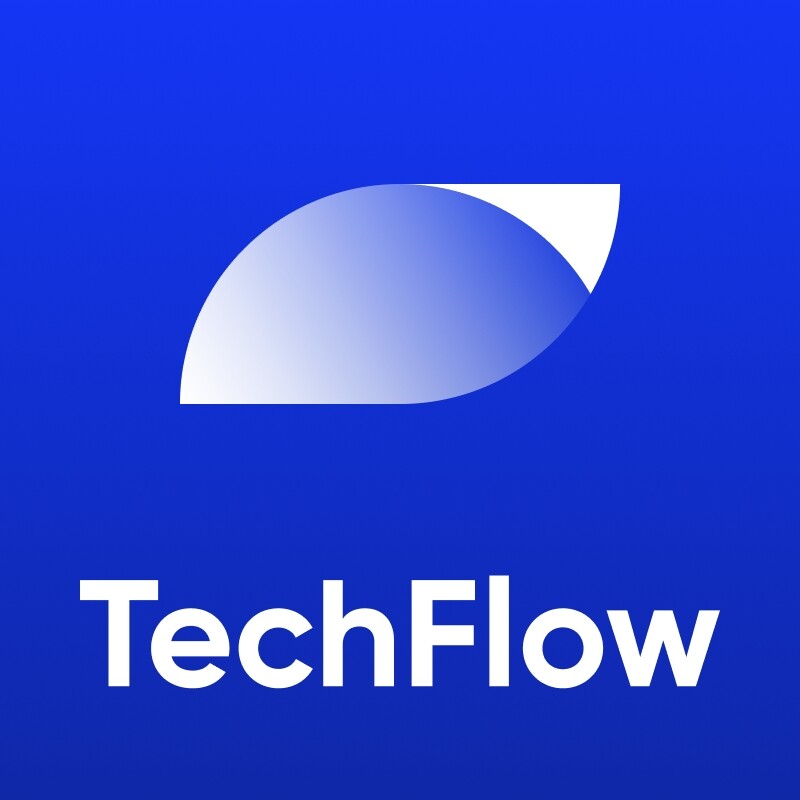Alpha Venture DAO价格
(欧元)€0.0099978
-- (--)
EUR
市值
€957.58万 #275
流通总量
9.48亿 / 10亿
历史最高价
€2.165
24 小时成交量
€205.80万
评级
3.8 / 5


了解Alpha Venture DAO
ALPHA(Alpha Venture DAO)是一种加密货币,旨在通过社区驱动的项目推动去中心化创新。基于区块链技术构建,它使用户能够参与其生态系统内的治理、融资和决策。ALPHA代币用于提案投票、质押获取奖励,以及访问Alpha Venture DAO网络中的独家机会。该项目注重促进协作与透明度,使其成为对去中心化金融(DeFi)和社区主导计划感兴趣人士的理想选择。凭借其强调实用性与参与性,ALPHA为加密货币新手提供了一种简单的方式,既能探索加密世界,又能为有意义的项目做出贡献。
本内容由 AI 生成
免责声明
本页面的社交内容 (包括由 LunarCrush 提供支持的推文和社交统计数据) 均来自第三方,并按“原样”提供,仅供参考。本文内容不代表对任何数字货币或投资的认可或推荐,也未获得欧易授权或撰写,也不代表我们的观点。我们不保证所显示的用户生成内容的准确性或可靠性。本文不应被解释为财务或投资建议。在做出投资决策之前,评估您的投资经验、财务状况、投资目标和风险承受能力并咨询独立财务顾问至关重要。过去的表现并不代表未来的结果。您的投资价值可能会波动,您可能无法收回您投资的金额。您对自己的投资选择自行承担全部责任,我们对因使用本信息而造成的任何损失或损害不承担任何责任。提供外部网站链接是为了用户方便,并不意味着对其内容的认可或控制。
请参阅我们的 使用条款 和 风险警告,了解更多详情。通过使用第三方网站(“第三方网站”),您同意对第三方网站的任何使用均受第三方网站条款的约束和管辖。除非书面明确说明,否则欧易及其关联方(“OKX”)与第三方网站的所有者或运营商没有任何关联。您同意欧易对您使用第三方网站而产生的任何损失、损害和任何其他后果不承担任何责任。请注意,使用第三方网站可能会导致您的资产损失或贬值。本产品可能无法在所有司法管辖区提供或适用。
请参阅我们的 使用条款 和 风险警告,了解更多详情。通过使用第三方网站(“第三方网站”),您同意对第三方网站的任何使用均受第三方网站条款的约束和管辖。除非书面明确说明,否则欧易及其关联方(“OKX”)与第三方网站的所有者或运营商没有任何关联。您同意欧易对您使用第三方网站而产生的任何损失、损害和任何其他后果不承担任何责任。请注意,使用第三方网站可能会导致您的资产损失或贬值。本产品可能无法在所有司法管辖区提供或适用。
Alpha Venture DAO 的价格表现
近 1 年
-80.28%
€0.05
3 个月
-24.21%
€0.01
30 天
-26.92%
€0.01
7 天
-22.49%
€0.01
Alpha Venture DAO 社交媒体动态

Bittensor 首次减半,我为何依然看涨 $TAO?
作者:Sami Kassab
编译:深潮TechFlow
2025年12月,Bittensor即将迎来首次减半,这引发了社区内不同的情绪反应。一些人冷静自信,认为网络能够适应这一变化;另一些人则感到不安,认为协议可能需要调整。这样的反应并不令人惊讶。
如果回顾比特币首次减半的历史,你会发现当时的情绪与现在非常相似:悲观者坚信比特币会陷入死亡螺旋,而乐观者则认为系统会适应,因为激励机制本身要求如此。
简而言之,悲观者错了。比特币至今仍然存在,并证明了程序化货币政策的有效性。我们认为,Bittensor 的减半也会呈现类似的结果。
不过,比特币与 Bittensor之间有一个关键区别:Bittensor拥有两个代币——TAO 和 Alpha(子网代币),它们分别遵循不同的减半时间表,这使得情况更加复杂。
我们会详细解析,但首先明确我们的长期观点:减半对 TAO 和子网代币来说都是利好,即使像比特币一样,这种影响的具体时机难以预测。
概述
如果您不想深入了解细节,这里是简要版本:
对于 TAO 来说,减半将使代币发行量减少一半,意味着流通中的TAO减少,能够被出售的TAO 也减少。这显然是利好。
可以这样理解:在比特币网络中,矿工直接赚取 BTC ,而减半会减少他们的收益及可出售的数量。在 Bittensor 中,子网赚取的是TAO,减半则意味着流入这些子网的TAO减少,因此矿工、验证者和代币持有者能够出售的 TAO 也减少。
对于子网代币来说,情况更为复杂。子网的核心是一个流动性池,而TAO减半将使链上流动性注入减少一半。流动性收紧会带来更高的波动性,使价格变动在两个方向上都被放大。
例如,如果子网市场(价格总和)在当前流动性下上周上涨了1%,在减半后的流动性环境下,这种上涨可能会在边际上放大至两倍。净流动方向将成为影响子网价格的唯一变量。
我们的看法是这样的:
Bittensor 仍是AI与加密领域的无可争议领导者。
TAO 在10月10日经历残酷的山寨币清算后迅速恢复价格,显示了其强劲的韧性。
子网市场(即价格总和)似乎已经触底。
领先子网的基本面正在改善,回购开始为代币带来实际收入。
像 Yuma 的子网资产管理产品、Grayscale 公开的 TAO 信托申请以及更多Bittensor DATs的推出,将使机构和散户更容易接触子网。
TAO质押(Root)的收益率继续下降,这可能会推动 TAO 流入子网,因为投资者希望避免稀释并捕获上涨空间。
因此,我们的观点是:我们认为子网资金流即将转为正向。在减半后波动性更高、流动性更紧的环境中,这对子网代币来说是一个顺风。
细节解析
Bittensor 协议通过将 TAO 注入每个子网的流动性池,按子网代币(Alpha)的价格比例分配TAO。这项机制是在2025年2月通过动态 TAO 升级引入的,标志着 Bittensor 的代币分配系统转向市场驱动模式。
TAO 注入流动性池的设计目的是保持子网代币价格的稳定。当链条向池的一侧注入 TAO 时,同时向另一侧注入 Alpha 以保持平衡。减半后,TAO 注入量将减少50%,相应的 Alpha 注入量也会自动减少,以防止价格波动。
例如,如果一个子网目前拥有10%的发行份额,并以0.1 TAO交易(假设价格总和为1以简化计算),它每个区块接收0.1 TAO 和1 Alpha。减半后,同一个子网每个区块将接收0.05 TAO和0.5 Alpha。
主要影响是子网池中的TAO和Alpha流动性增长速度变慢。流动性减少意味着价格波动性增加,无论是上涨还是下跌。基本上,子网代币的交易将表现出更高的Beta值。
这对矿工的影响最大。他们是结构性卖家,面临以美元计价的成本,因此会定期将Alpha换成TAO(然后将TAO换成美元)以支付费用。减半后,流动性减少意味着每次出售Alpha得到的TAO更少,因为 TAO 深度减少,滑点增加。因此,从子网池中提取并出售的 TAO 数量将减少。
子网所有者可以通过减少矿工发行量约50%来应对这种失衡,从而有效地创造一个“Alpha减半”。这虽然无法完全恢复减半前的条件,但可以让系统更接近平衡。通过减少进入流通的Alpha数量,子网可以减缓Alpha在较薄的TAO池中的销售速度,防止流动性更快地耗尽。与TAO减半同步减少Alpha发行量可以稳定子网价格,并缓解整个网络的波动性。
或者,子网可以通过逐步增加结构性需求(可能通过回购)来抵消减半的影响,减少对削减矿工发行量的需求。
影响分析
减半的直接影响是子网将获得更少的 TAO。这种压力将使效率较低的矿工退出网络,这是一种在每次比特币减半后都会出现的模式。
较弱的子网也将面临困境。随着流入的 TAO 减少一半,流动性增长放缓,矿工利润率缩小,维持参与变得更加困难。这将强化帕累托分布,导致发行量向更强的子网集中。实际上,网络会将 TAO 从较弱的子网重新分配到较强的子网。
与此同时,新的子网在启动流动性时将面临更多挑战。它们将竞争更少的TAO发行量,这意味着流入动态 TAO 系统的价值减少,而新子网从零开始。由于流动性池中的Alpha注入量也减半,新子网的流通供应增长速度将慢于老子网。较低的流通供应使根本比例(Root Prop)在更长时间内保持较高水平,这意味着新子网的系统性销售压力比前辈更为明显。
但这只是问题的一面。如果 TAO 价格因销售压力减少而上涨,子网所有者可能不需要大幅削减矿工发行量甚至完全不削减。矿工利润率可能恢复到减半前水平,而新子网启动流动性的挑战也会随着 TAO 发行量的美元价值上涨而缓解。与比特币类似,这种效应可能不会立即显现,但会随着供应减少逐渐追赶需求而逐步显现。
抗脆弱性
减半将带来冲击和波动。供应减少对系统的影响需要时间来显现。但在比特币成功验证程序化货币政策后,没有理由怀疑其有效性。凭借同样坚定的社区,我们相信 Bittensor 会遵循相同的路径。
纳西姆·塔勒布(Nassim Taleb)认为,低波动性会导致脆弱性,因为它隐藏了压力,直到系统崩溃。相比之下,面对定期冲击的系统会变得更强。Bittensor 的减半就是这样的冲击。这是一个无意间的压力测试,能让网络更强韧。这是众多冲击中的第一次,如果网络要在未来几十年内蓬勃发展,它必须经历这样的淬炼。
快捷导航
Alpha Venture DAO购买指南
开始入门数字货币可能会让人觉得不知所措,但学习如何购买比您想象的要简单。
预测 Alpha Venture DAO 的价格走势
Alpha Venture DAO 未来几年值多少?看看社区热议,参与讨论一波预测。
查看 Alpha Venture DAO 的价格历史
追踪 Alpha Venture DAO 代币的价格历史,实时关注持仓表现。您可以通过下方列表快捷查看开盘价、收盘价、最高价、最低价及交易量。

Alpha Venture DAO 常见问题
目前,一个 Alpha Venture DAO 价值是 €0.0099978。如果您想要了解 Alpha Venture DAO 价格走势与行情洞察,那么这里就是您的最佳选择。在欧易探索最新的 Alpha Venture DAO 图表,进行专业交易。
数字货币,例如 Alpha Venture DAO 是在称为区块链的公共分类账上运行的数字资产。了解有关欧易上提供的数字货币和代币及其不同属性的更多信息,其中包括实时价格和实时图表。
由于 2008 年金融危机,人们对去中心化金融的兴趣激增。比特币作为去中心化网络上的安全数字资产提供了一种新颖的解决方案。从那时起,许多其他代币 (例如 Alpha Venture DAO) 也诞生了。
查看 Alpha Venture DAO 价格预测页面,预测未来价格,帮助您设定价格目标。
深度了解Alpha Venture DAO
Alpha Finance Lab 正在打造一个创新 DeFi 产品的生态,该生态内的产品将相互配合,在为用户带来最大收益的同时,将风险降到最低。Alpha 产品专注于以创新和用户友好的方式捕捉 DeFi 中未被解决的需求。Alpha Finance 的第一款 Alpha 产品是 Alpha Homora,这是 DeFi 领域中第一款杠杆流动性挖矿产品。 每一款 Alpha 产品都旨在解决产品所在行业的市场空白和现存问题。各款 Alpha 产品将联手为用户实现收益最大化和风险最小化,从而在 DeFi 中构建一个强大的 Alpha 生态。
ESG 披露
ESG (环境、社会和治理) 法规针对数字资产,旨在应对其环境影响 (如高能耗挖矿)、提升透明度,并确保合规的治理实践。使数字代币行业与更广泛的可持续发展和社会目标保持一致。这些法规鼓励遵循相关标准,以降低风险并提高数字资产的可信度。
资产详情
名称
OKCoin Europe Ltd
相关法人机构识别编码
54930069NLWEIGLHXU42
代币名称
AlphaToken
共识机制
AlphaToken is present on the following networks: Avalanche, Binance Smart Chain, Ethereum.
The Avalanche blockchain network employs a unique Proof-of-Stake consensus mechanism called Avalanche Consensus, which involves three interconnected protocols: Snowball, Snowflake, and Avalanche. Avalanche Consensus Process 1. Snowball Protocol: o Random Sampling: Each validator randomly samples a small, constant-sized subset of other validators. Repeated Polling: Validators repeatedly poll the sampled validators to determine the preferred transaction. Confidence Counters: Validators maintain confidence counters for each transaction, incrementing them each time a sampled validator supports their preferred transaction. Decision Threshold: Once the confidence counter exceeds a pre-defined threshold, the transaction is considered accepted. 2. Snowflake Protocol: Binary Decision: Enhances the Snowball protocol by incorporating a binary decision process. Validators decide between two conflicting transactions. Binary Confidence: Confidence counters are used to track the preferred binary decision. Finality: When a binary decision reaches a certain confidence level, it becomes final. 3. Avalanche Protocol: DAG Structure: Uses a Directed Acyclic Graph (DAG) structure to organize transactions, allowing for parallel processing and higher throughput. Transaction Ordering: Transactions are added to the DAG based on their dependencies, ensuring a consistent order. Consensus on DAG: While most Proof-of-Stake Protocols use a Byzantine Fault Tolerant (BFT) consensus, Avalanche uses the Avalanche Consensus, Validators reach consensus on the structure and contents of the DAG through repeated Snowball and Snowflake.
Binance Smart Chain (BSC) uses a hybrid consensus mechanism called Proof of Staked Authority (PoSA), which combines elements of Delegated Proof of Stake (DPoS) and Proof of Authority (PoA). This method ensures fast block times and low fees while maintaining a level of decentralization and security. Core Components 1. Validators (so-called “Cabinet Members”): Validators on BSC are responsible for producing new blocks, validating transactions, and maintaining the network’s security. To become a validator, an entity must stake a significant amount of BNB (Binance Coin). Validators are selected through staking and voting by token holders. There are 21 active validators at any given time, rotating to ensure decentralization and security. 2. Delegators: Token holders who do not wish to run validator nodes can delegate their BNB tokens to validators. This delegation helps validators increase their stake and improves their chances of being selected to produce blocks. Delegators earn a share of the rewards that validators receive, incentivizing broad participation in network security. 3. Candidates: Candidates are nodes that have staked the required amount of BNB and are in the pool waiting to become validators. They are essentially potential validators who are not currently active but can be elected to the validator set through community voting. Candidates play a crucial role in ensuring there is always a sufficient pool of nodes ready to take on validation tasks, thus maintaining network resilience and decentralization. Consensus Process 4. Validator Selection: Validators are chosen based on the amount of BNB staked and votes received from delegators. The more BNB staked and votes received, the higher the chance of being selected to validate transactions and produce new blocks. The selection process involves both the current validators and the pool of candidates, ensuring a dynamic and secure rotation of nodes. 5. Block Production: The selected validators take turns producing blocks in a PoA-like manner, ensuring that blocks are generated quickly and efficiently. Validators validate transactions, add them to new blocks, and broadcast these blocks to the network. 6. Transaction Finality: BSC achieves fast block times of around 3 seconds and quick transaction finality. This is achieved through the efficient PoSA mechanism that allows validators to rapidly reach consensus. Security and Economic Incentives 7. Staking: Validators are required to stake a substantial amount of BNB, which acts as collateral to ensure their honest behavior. This staked amount can be slashed if validators act maliciously. Staking incentivizes validators to act in the network's best interest to avoid losing their staked BNB. 8. Delegation and Rewards: Delegators earn rewards proportional to their stake in validators. This incentivizes them to choose reliable validators and participate in the network’s security. Validators and delegators share transaction fees as rewards, which provides continuous economic incentives to maintain network security and performance. 9. Transaction Fees: BSC employs low transaction fees, paid in BNB, making it cost-effective for users. These fees are collected by validators as part of their rewards, further incentivizing them to validate transactions accurately and efficiently.
The crypto-asset's Proof-of-Stake (PoS) consensus mechanism, introduced with The Merge in 2022, replaces mining with validator staking. Validators must stake at least 32 ETH every block a validator is randomly chosen to propose the next block. Once proposed the other validators verify the blocks integrity. The network operates on a slot and epoch system, where a new block is proposed every 12 seconds, and finalization occurs after two epochs (~12.8 minutes) using Casper-FFG. The Beacon Chain coordinates validators, while the fork-choice rule (LMD-GHOST) ensures the chain follows the heaviest accumulated validator votes. Validators earn rewards for proposing and verifying blocks, but face slashing for malicious behavior or inactivity. PoS aims to improve energy efficiency, security, and scalability, with future upgrades like Proto-Danksharding enhancing transaction efficiency.
奖励机制与相应费用
AlphaToken is present on the following networks: Avalanche, Binance Smart Chain, Ethereum.
Avalanche uses a consensus mechanism known as Avalanche Consensus, which relies on a combination of validators, staking, and a novel approach to consensus to ensure the network's security and integrity. Validators: Staking: Validators on the Avalanche network are required to stake AVAX tokens. The amount staked influences their probability of being selected to propose or validate new blocks. Rewards: Validators earn rewards for their participation in the consensus process. These rewards are proportional to the amount of AVAX staked and their uptime and performance in validating transactions. Delegation: Validators can also accept delegations from other token holders. Delegators share in the rewards based on the amount they delegate, which incentivizes smaller holders to participate indirectly in securing the network. 2. Economic Incentives: Block Rewards: Validators receive block rewards for proposing and validating blocks. These rewards are distributed from the network’s inflationary issuance of AVAX tokens. Transaction Fees: Validators also earn a portion of the transaction fees paid by users. This includes fees for simple transactions, smart contract interactions, and the creation of new assets on the network. 3. Penalties: Slashing: Unlike some other PoS systems, Avalanche does not employ slashing (i.e., the confiscation of staked tokens) as a penalty for misbehavior. Instead, the network relies on the financial disincentive of lost future rewards for validators who are not consistently online or act maliciously. o Uptime Requirements: Validators must maintain a high level of uptime and correctly validate transactions to continue earning rewards. Poor performance or malicious actions result in missed rewards, providing a strong economic incentive to act honestly. Fees on the Avalanche Blockchain 1. Transaction Fees: Dynamic Fees: Transaction fees on Avalanche are dynamic, varying based on network demand and the complexity of the transactions. This ensures that fees remain fair and proportional to the network's usage. Fee Burning: A portion of the transaction fees is burned, permanently removing them from circulation. This deflationary mechanism helps to balance the inflation from block rewards and incentivizes token holders by potentially increasing the value of AVAX over time. 2. Smart Contract Fees: Execution Costs: Fees for deploying and interacting with smart contracts are determined by the computational resources required. These fees ensure that the network remains efficient and that resources are used responsibly. 3. Asset Creation Fees: New Asset Creation: There are fees associated with creating new assets (tokens) on the Avalanche network. These fees help to prevent spam and ensure that only serious projects use the network's resources.
Binance Smart Chain (BSC) uses the Proof of Staked Authority (PoSA) consensus mechanism to ensure network security and incentivize participation from validators and delegators. Incentive Mechanisms 1. Validators: Staking Rewards: Validators must stake a significant amount of BNB to participate in the consensus process. They earn rewards in the form of transaction fees and block rewards. Selection Process: Validators are selected based on the amount of BNB staked and the votes received from delegators. The more BNB staked and votes received, the higher the chances of being selected to validate transactions and produce new blocks. 2. Delegators: Delegated Staking: Token holders can delegate their BNB to validators. This delegation increases the validator's total stake and improves their chances of being selected to produce blocks. Shared Rewards: Delegators earn a portion of the rewards that validators receive. This incentivizes token holders to participate in the network’s security and decentralization by choosing reliable validators. 3. Candidates: Pool of Potential Validators: Candidates are nodes that have staked the required amount of BNB and are waiting to become active validators. They ensure that there is always a sufficient pool of nodes ready to take on validation tasks, maintaining network resilience. 4. Economic Security: Slashing: Validators can be penalized for malicious behavior or failure to perform their duties. Penalties include slashing a portion of their staked tokens, ensuring that validators act in the best interest of the network. Opportunity Cost: Staking requires validators and delegators to lock up their BNB tokens, providing an economic incentive to act honestly to avoid losing their staked assets. Fees on the Binance Smart Chain 5. Transaction Fees: Low Fees: BSC is known for its low transaction fees compared to other blockchain networks. These fees are paid in BNB and are essential for maintaining network operations and compensating validators. Dynamic Fee Structure: Transaction fees can vary based on network congestion and the complexity of the transactions. However, BSC ensures that fees remain significantly lower than those on the Ethereum mainnet. 6. Block Rewards: Incentivizing Validators: Validators earn block rewards in addition to transaction fees. These rewards are distributed to validators for their role in maintaining the network and processing transactions. 7. Cross-Chain Fees: Interoperability Costs: BSC supports cross-chain compatibility, allowing assets to be transferred between Binance Chain and Binance Smart Chain. These cross-chain operations incur minimal fees, facilitating seamless asset transfers and improving user experience. 8. Smart Contract Fees: Deployment and Execution Costs: Deploying and interacting with smart contracts on BSC involves paying fees based on the computational resources required. These fees are also paid in BNB and are designed to be cost-effective, encouraging developers to build on the BSC platform.
The crypto-asset's PoS system secures transactions through validator incentives and economic penalties. Validators stake at least 32 ETH and earn rewards for proposing blocks, attesting to valid ones, and participating in sync committees. Rewards are paid in newly issued ETH and transaction fees. Under EIP-1559, transaction fees consist of a base fee, which is burned to reduce supply, and an optional priority fee (tip) paid to validators. Validators face slashing if they act maliciously and incur penalties for inactivity. This system aims to increase security by aligning incentives while making the crypto-asset's fee structure more predictable and deflationary during high network activity.
信息披露时间段的开始日期
2024-10-14
信息披露时间段的结束日期
2025-10-14
能源报告
能源消耗
149.66281 (kWh/a)
能源消耗来源与评估体系
The energy consumption of this asset is aggregated across multiple components:
To determine the energy consumption of a token, the energy consumption of the network(s) avalanche, binance_smart_chain, ethereum is calculated first. For the energy consumption of the token, a fraction of the energy consumption of the network is attributed to the token, which is determined based on the activity of the crypto-asset within the network. When calculating the energy consumption, the Functionally Fungible Group Digital Token Identifier (FFG DTI) is used - if available - to determine all implementations of the asset in scope. The mappings are updated regularly, based on data of the Digital Token Identifier Foundation. The information regarding the hardware used and the number of participants in the network is based on assumptions that are verified with best effort using empirical data. In general, participants are assumed to be largely economically rational. As a precautionary principle, we make assumptions on the conservative side when in doubt, i.e. making higher estimates for the adverse impacts.
市值
€957.58万 #275
流通总量
9.48亿 / 10亿
历史最高价
€2.165
24 小时成交量
€205.80万
评级
3.8 / 5







